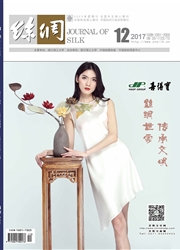

 中文摘要:
中文摘要:
对浙江地区的跨湖桥文化、河姆渡文化、马家浜文化、崧泽文化及良渚文化出土的纺轮进行了抽样统计调查,利用NITON便携式X荧光能谱仪分析了纺轮的元素成分,并按照材质、形制等进行了归类,探讨了纺轮的具体功能与作用。研究结果表明纺轮本体的制作工艺随着时期变迁愈趋成熟,从碎陶片改制到陶土焙制;形制从多样化向单一化发展;钻孔的方式可以间接反应纺轮与拈杆的使用方式,而且间接反应了男耕女织的社会分工形态。
 英文摘要:
英文摘要:
This paper conducts sampling statistics investigation of the spinning wheel excavated from the sites in Zhejiang province,involving Kuahuqiao culture,Hemudu culture,Majiabang culture,Songze culture and Liangzhu culture.This paper uses NITON portable X fluorescence energy disperse spectroscopy to analyze elementary compositions of the spinning wheel,classifies them according to material quality,shape and structure and discusses specific functions and effects of the spinning wheel.The research results show the manufacturing technology of the pinning wheel becomes increasingly mature with the time,from smashed pottery shard reconstruction to argil baking;the shape and structure develop to simplification fro diversification;the drilling way can indirectly reflect the use mode of the spindle wheel and spindle shaft as well as social labor division form that men do farm work and women engage in spinning and weaving.
 同期刊论文项目
同期刊论文项目
 同项目期刊论文
同项目期刊论文
 期刊信息
期刊信息
